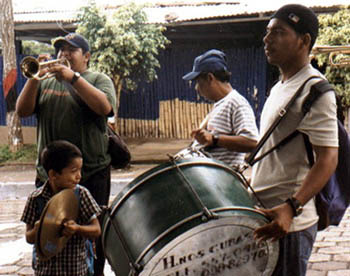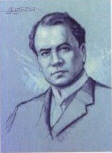Culture
Nicaraguan land was inhabitated during Pre-Colombian times by many indigenous peoples such as the Nicaraos, Chorotegas, Chontales and Miskitos. Christopher Columbus was the first European who stepped on Nicaraguan land during his fourth and last journey to America. Afterwards many Spanish conquerors settled on these lands. Hernandez de Cordoba from whom the currency is named, discovered Lake Nicaragua and founded the cities of Granada and Leon.
In 1625 the English arrived to Nicaragua and declared it a British Protectorate called the Mosquito Kingdom which extended from Belize to the San Juan River. The British stayed until 1894 in the large Atlantic Coast region of the country. Nicaragua belonged to the Spanish-Mexican Royalty and later to the Federation of Central American United Provinces which received independence from Spain in 1821.
Music and Dance
The Marimba is the national instrument. It is constructed with hardwood plates, placed over bamboo or metal tubes of different lengths. It is played with 2 or 4 soft hammers. It is usually played along with guitars and some percussion instruments.
Band in San Juan de Oriente.Picture provided by Jennifer Herrin
On the Caribbean coast you will find a different kind of music due to the African influence. The rhythms are intensive, frantic and very sensual. The best time to enjoy this music is during the "Palo de Mayo" Festival in May.
There is an immense indigenous theatrical heritage. Indigenous people used to have theatrical manifestations accompanied with beautiful music and dances. Most important are the Elegant Knights of the Huaco Bull and The Gueguense. These representations are in most cases associated with the religious festivals and celebrations.
Carlos Mejia Godoy has also composed many of the most famous Nicaraguan songs in almost any Nicaraguan music album along with his brother Enrique. They run their own establishment in Managua's Entertainment district where you can enjoy their music and poetry. Other composers, groups and performers enrich our musical tradition and culture such us Camilo Zapata, Dimension Costeņa group, Luis Enrique "The Salsa Prince", Salvador Cardenal, Katia Cardenal, Lia Barrios and many other great artists. You can find their albums at most music shops.
Literature
Maybe the most famous celebrity in the Nicaraguan Literature world, is the poet Ruben Dario (1867-1916). He is considered the father of the modernist movement. His "Blue Work, 1888" is considered to have settled the basis of this style and which is expressed in the work "Profane, Proses 1896". Modernism was a movement against Romanticism. It uses complex, rich vocabulary and forms.
Ruben Dario was born in Metapa, also called Dario city, 40 km away from Matagalpa. His name was Felix Ruben Garcia Sarmiento. After living in Chile, Argentina and Spain, he came back to die in his beloved Nicaragua and his tomb is beneath the arches of the Leon Cathedral.
A new movement called Vanguard appeared in the middle of the twentieth century, it has its center of activities in Granada. Its work was intended to reasearch the Nicaraguan national and cultural identity. Some of the most important authors are Ernesto Cardenal, Carlos Martinez Rivas, and Ernesto Mejia Sanchez. Many other authors enrich our literature nowadays.
Ruben Dario poet
For more information about Nicaragua, contact us at [email protected]

